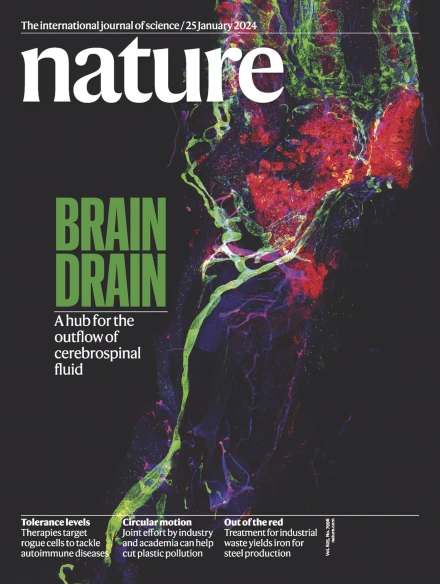气候变暖时,云会减少陆地上的下沉长波辐射
IF 48.5
1区 综合性期刊
Q1 MULTIDISCIPLINARY SCIENCES
引用次数: 0
摘要
云极大地影响着地球的能量平衡1,2。云的辐射反馈是一种明显不确定的气候反馈机制3,4,5,观测制约云的辐射反馈对改进气候变化预测至关重要5,6,7,但迄今为止,这仍是一个难以实现的目标,而且海洋与陆地上的反馈可能不同8,9,10。在这里,我们通过对光谱分辨下沉长波辐射率的直接长期观测,展示了大平原南部陆地上的局部地表长波云负反馈11。大平原南部站点的这种负云层反馈会导致下沉长波辐射每十年变化-1.77 ± 1.15 W m-2,这表明云层变化可能会部分调节陆地温室气体浓度和大气温度增加所带来的变暖效应。具体来说,我们的结果来自于一种最佳光谱指纹识别方法12,13,14,15,该方法旨在利用光谱分辨率辐射长期记录中的独特光谱特征13,14,15,16,17,18,将地表长波云反馈与其他地表作用力和反馈区分开来。此外,我们还表明,这些结果并不局限于特定地点:在再分析和卫星数据集中,陆地上普遍观测到负的地表长波云反馈,主要是气候变暖时低云层减少引起的。我们的发现为验证气候模式在陆地上的表现建立了一个关键的辐射强迫和反馈观测基准。本文章由计算机程序翻译,如有差异,请以英文原文为准。


Clouds reduce downwelling longwave radiation over land in a warming climate
Clouds greatly influence the Earth’s energy balance1,2. Observationally constraining cloud radiative feedback, a notably uncertain climate feedback mechanism3–5, is crucial for improving predictions of climate change5–7 but, so far, remains an elusive objective, and the feedback may be different over the ocean versus over land8–10. Here we show a local negative surface longwave cloud feedback over land at the southern Great Plains site, constrained by direct long-term observation of spectrally resolved downwelling longwave radiance11. This negative cloud feedback at the southern Great Plains site causes a −1.77 ± 1.15 W m−2 per decade change in downwelling longwave radiation and suggests that cloud changes may partially modulate the warming effect of increased greenhouse gas concentrations and atmospheric temperatures over land. Specifically, our results are derived from an optimal spectral fingerprinting method12–15 designed to separate surface longwave cloud feedback from other surface forcings and feedbacks, by making use of their unique spectral signatures13–18 in the long-term record of spectrally resolved radiances. Furthermore, we show that the results are not site specific: negative surface longwave cloud feedbacks, primarily induced by decreasing low cloud cover in warming climates, are commonly observed over land in reanalysis and satellite datasets. Our findings establish a pivotal observational benchmark of radiative forcing and feedback needed for validating climate model performance over land. Results derived from an optimal spectral fingerprinting method applied to reanalysis and satellite datasets show that low cloud cover in warming climates caused a reduction in downwelling longwave radiation over land, which is not site specific.
求助全文
通过发布文献求助,成功后即可免费获取论文全文。
去求助
来源期刊

Nature
综合性期刊-综合性期刊
CiteScore
90.00
自引率
1.20%
发文量
3652
审稿时长
3 months
期刊介绍:
Nature is a prestigious international journal that publishes peer-reviewed research in various scientific and technological fields. The selection of articles is based on criteria such as originality, importance, interdisciplinary relevance, timeliness, accessibility, elegance, and surprising conclusions. In addition to showcasing significant scientific advances, Nature delivers rapid, authoritative, insightful news, and interpretation of current and upcoming trends impacting science, scientists, and the broader public. The journal serves a dual purpose: firstly, to promptly share noteworthy scientific advances and foster discussions among scientists, and secondly, to ensure the swift dissemination of scientific results globally, emphasizing their significance for knowledge, culture, and daily life.
 求助内容:
求助内容: 应助结果提醒方式:
应助结果提醒方式:


